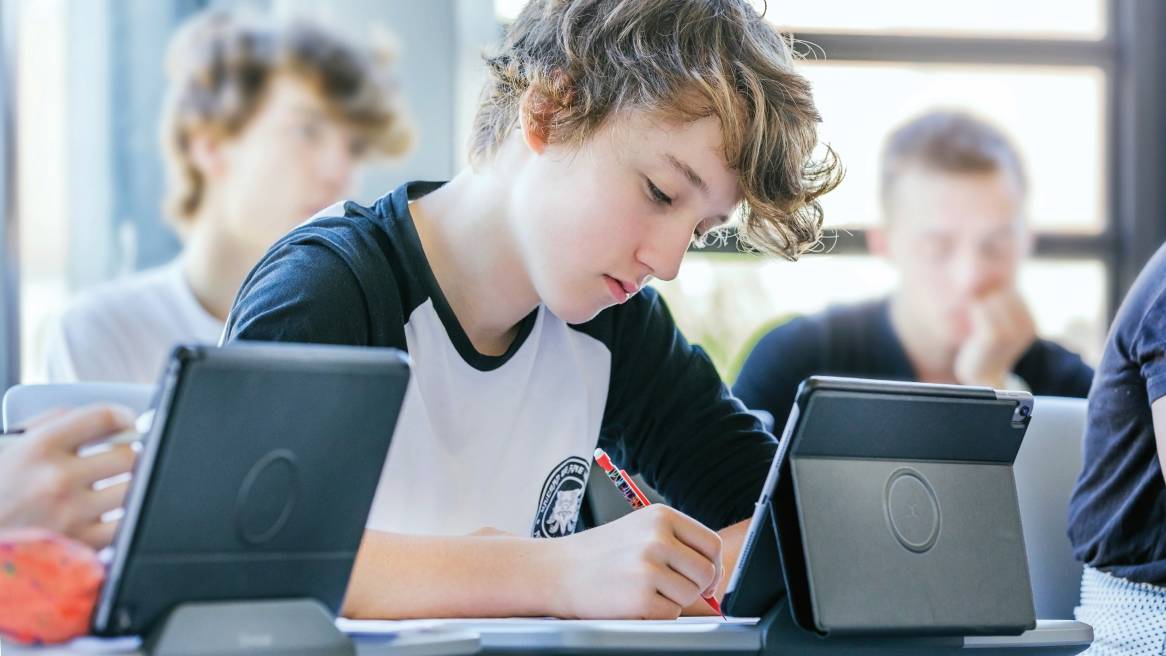Coaching Students for the 21st-Century
The Institut International de Lancy and Steelcase Education join forces to break the traditional classroom mold.
Settled in the international hub of Geneva, Switzerland, the Institut International de Lancy (IIL) is a school at the forefront of change. With students who represent over 90 nationalities and span from 3–18 years old, 80 percent of whom are bilingual, IIL brings a new meaning to the term diversity. Beginning as a small French-Catholic school, the school has transformed its curriculum, campus and philosophy to become a thought-leader when it comes to the future of education.
“The traditional lecture-style classroom with a blackboard and the teacher up front leaves little room for creativity. Creativity needs space and mobility such as you might find in a start-up or modern office building,” says Norbert Foerster, General Director of IIL. As a trained child psychologist, Foerster has had a successful tenure promoting this bold vision for IIL. He implemented the school’s English international section, advocated for technology to be woven into IIL’s DNA and pushed for the necessary evolution of the campus to teach 21st-century skills such as creativity.
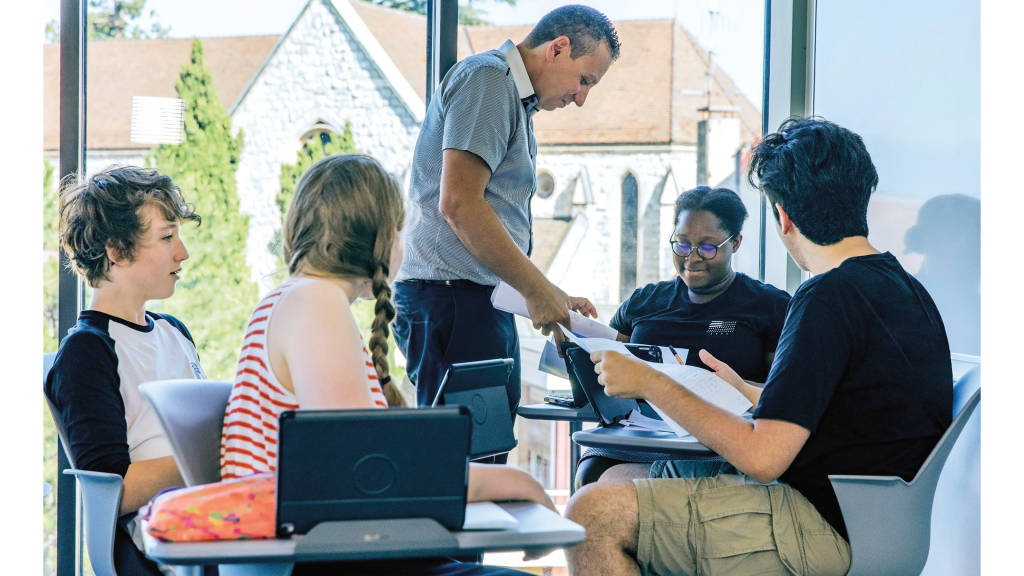
Breaking the mold
“We wanted to move away from the traditional classroom set-up,” notes Foerster. When initiating change he and his staff comprehensively researched potential partners. The school realized that to prepare the students of today for the workforce of tomorrow, the classrooms needed to be redesigned. “That’s where Steelcase came in,” says Adrian Hirst, a robotics and coding teacher at IIL. “The kind of furniture and the design of spaces to which our students now have access to in the Steelcase classrooms are well adapted to the types of task they are asked to carry out, these being independent, student-driven, student-centric challenges.”
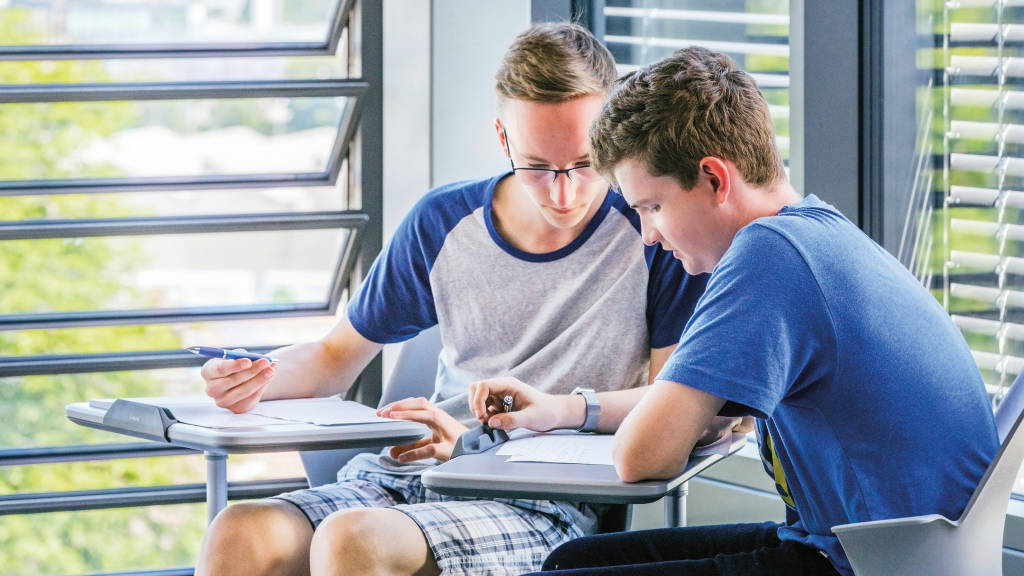
These challenges are steered by the school’s desire to mirror life off campus and to encourage students to practice skills like collaboration, critical thinking and digital citizenship, which is hard to do in the traditional learning environment. “In a traditional classroom with traditional furniture, unfortunately, it’s very difficult to break out of the mold of a traditional teaching style,” describes Hirst. “We’re moving further away from a traditional school setup and into a realistic, collaborative and productive environment where students are working towards goals which are relevant to them in the real world.”
A fluid Learning experience
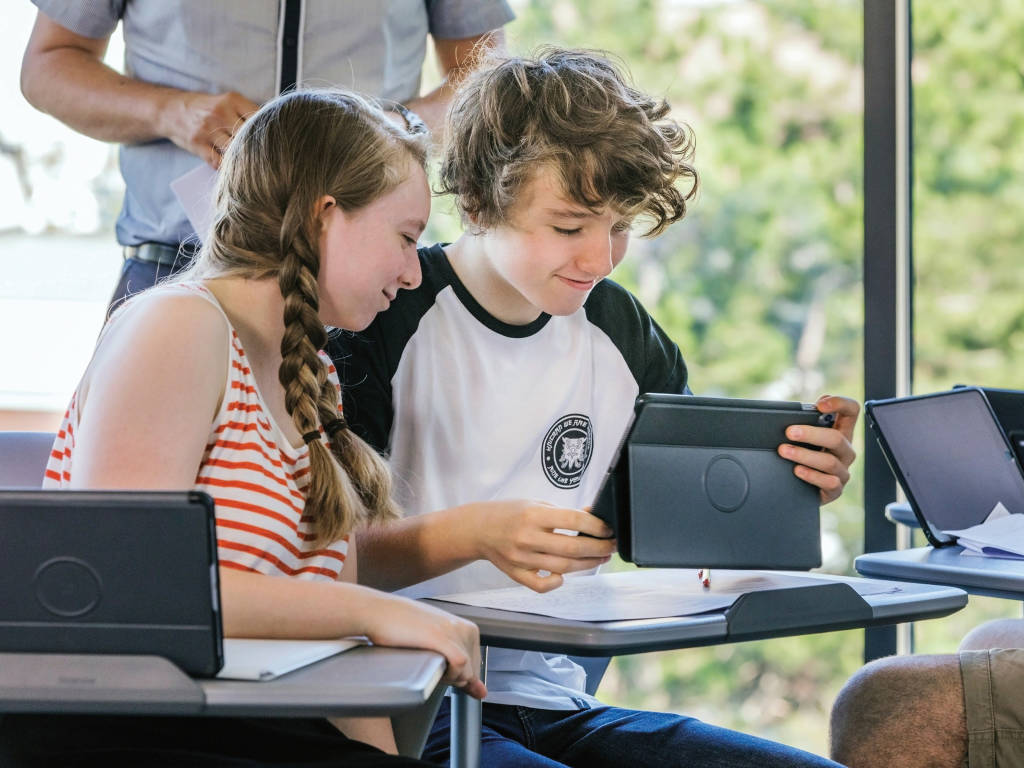
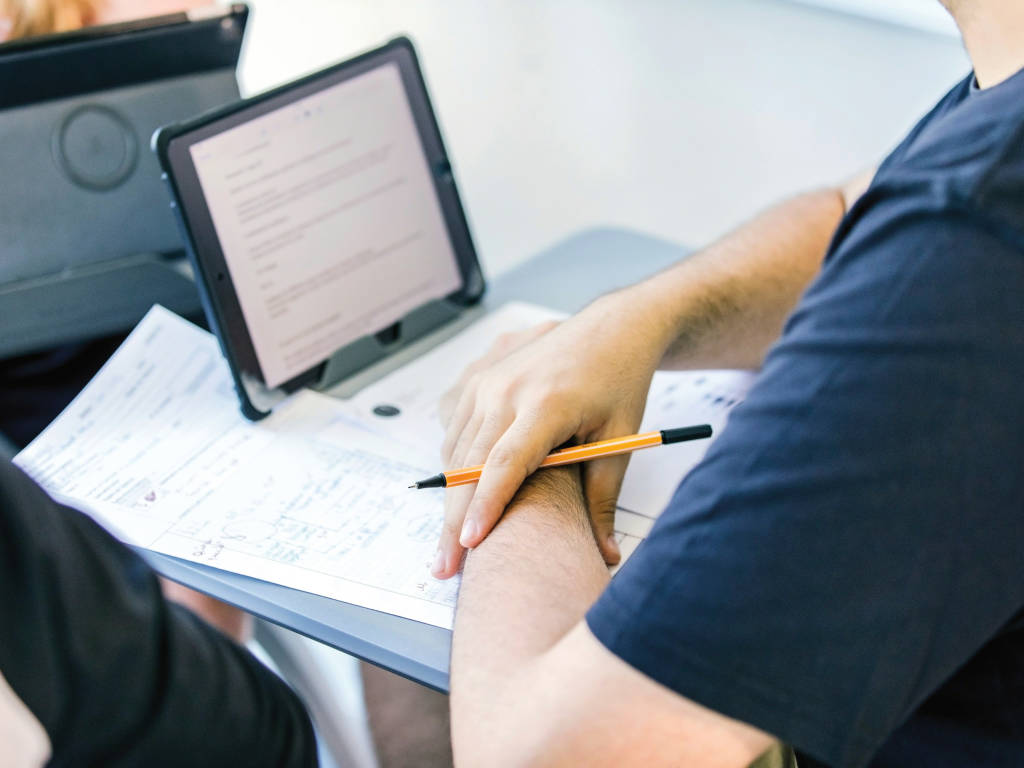
A significant influence at IIL is the permanence of technology. IIL was the first Apple Distinguished School in Switzerland and implemented the first one-to-one iPad program in the country. Each student has their own mobile device and technology is fused into the way lessons are structured. Hirst says integrating technology is vital to IIL’s success because “as a school, we are obviously expected to prepare our students for the real world. If we are not reflecting that, we are left behind. That’s why we made these decisions as regards to furniture and the way the spaces were designed. They allow students to perform in a completely different way.”
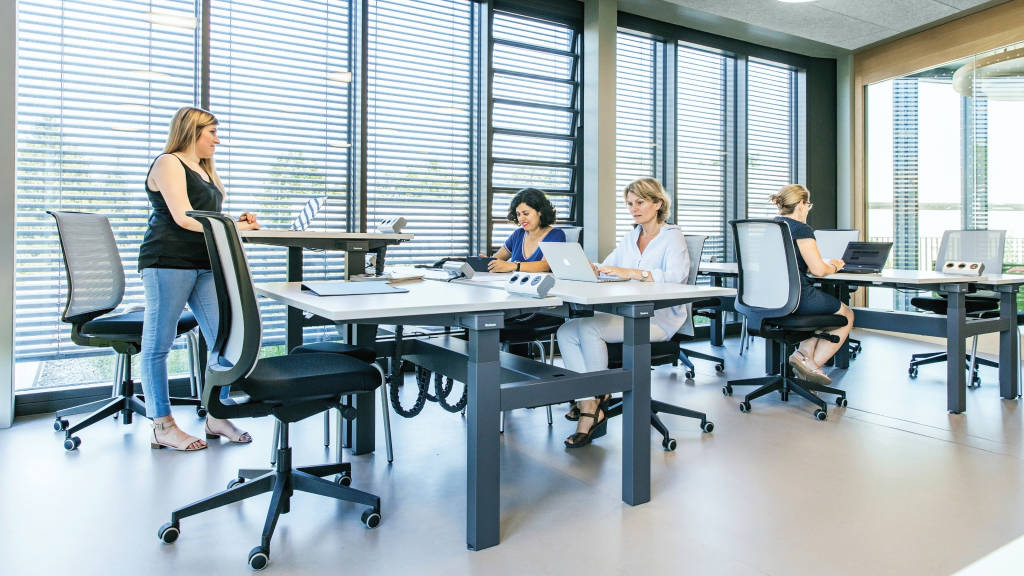
The integration of technology at IIL, coupled with a variety of spaces to study, meet and collaborate outside of the classroom, is what makes the entire campus an immersive learning experience. Students are encouraged to use the diverse mix of spaces and choose a place between classes and during breaks that best suits their needs. Learning is fluid, emulating the real world as Hirst describes. With mobile devices, mobile furniture and the choice and control students have to explore an ecosystem of spaces, ILL fosters teaching and learning beyond the formal learning environment.
This emphasis on a dynamic and flexible environment is critical to the classrooms’ updated design. The Steelcase Education Node chairs, now used in many IIL classrooms, were a deciding factor for IIL. The chair’s mobility and personal worksurface allow teachers to practice an active learning pedagogy where technology seamlessly blends in. Teachers take on the role of a coach with their students, which is central to IIL’s philosophy towards education, by guiding them towards autonomy and allowing them to manage their devices.
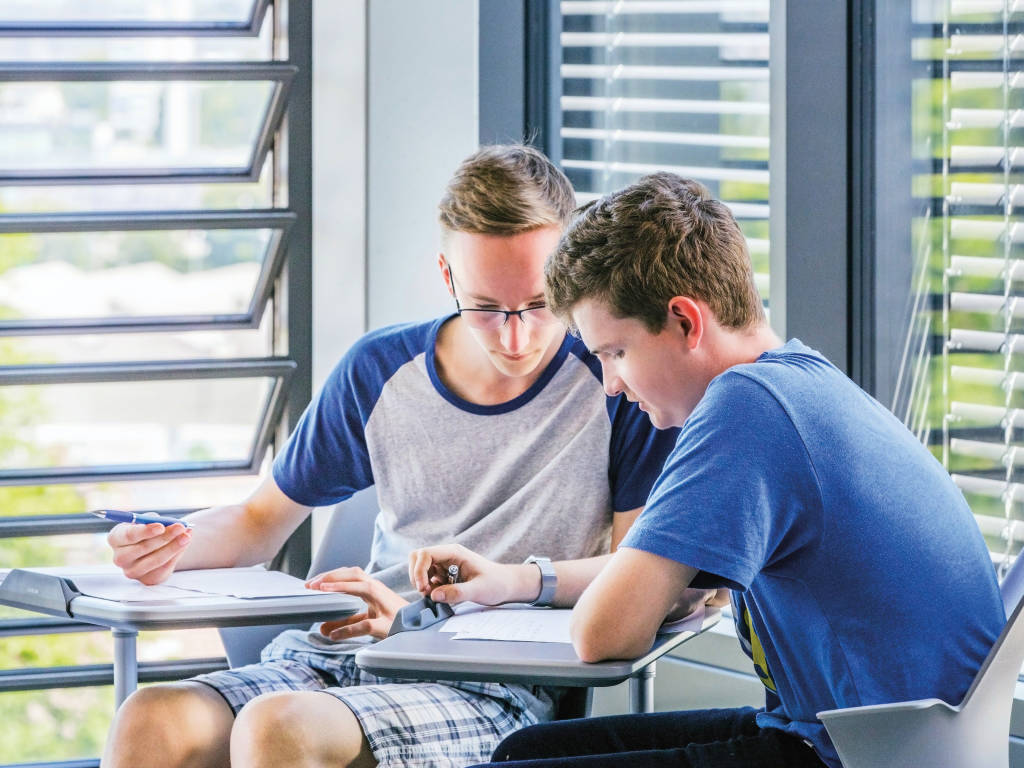
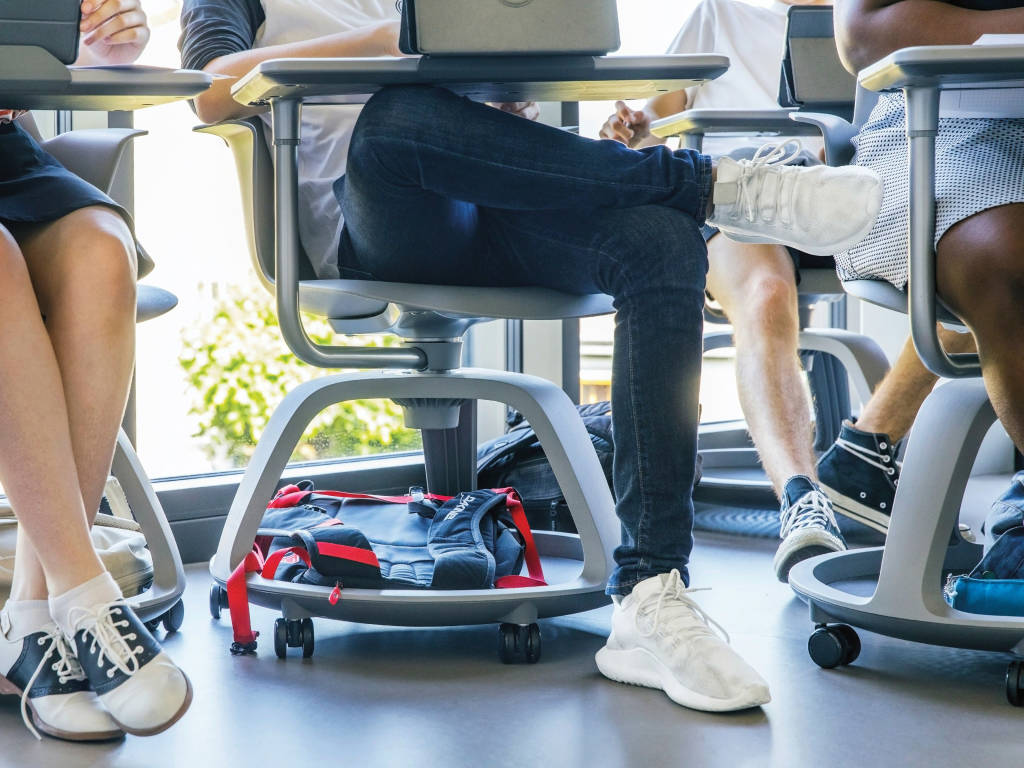
Caroline Duret, a teacher at IIL, describes the Steelcase Education classrooms as the third teacher, a theory that emphasizes the major role space plays in any learning environment. “Here learners do not turn their backs on each other. They can talk and communicate as they wish. The classroom is also decentralized, the teacher is among the students,” which Duret notes is how she often teaches, sitting side-by-side with her students in a Node chair. Another highlight for Duret is the rhythm of learning that the classroom fosters, which she says keeps students engaged. “This rhythm of learning is very important; students are more active, they get less bored, they get up and move. When I see smiling students who are happy at school, they don’t need to tell me they enjoy learning, their body language speaks for them.”
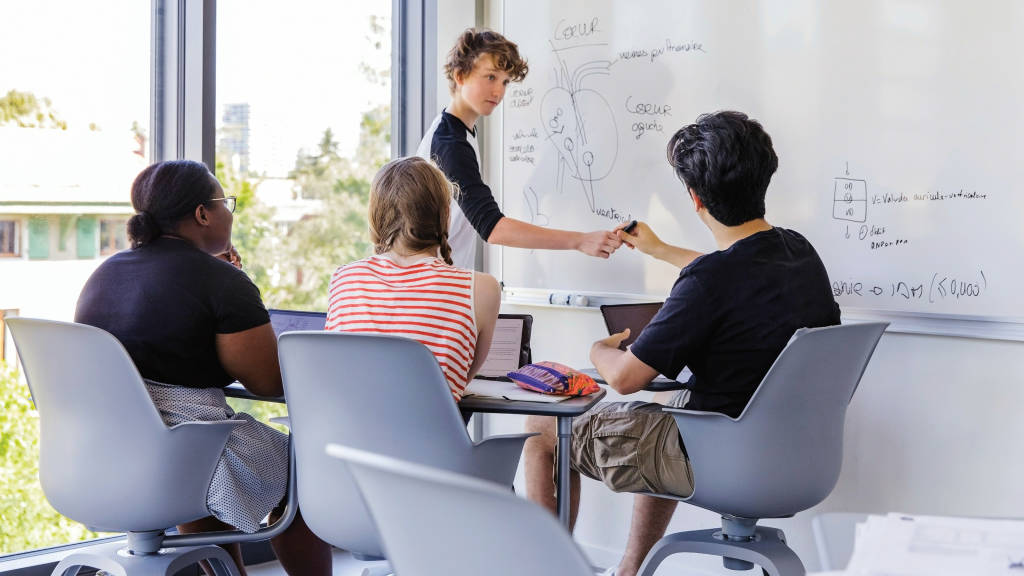
An organic evolution
A clear sign of success that the classrooms are effective is the reaction staff get from students. “Students are completely at ease and have adopted the classroom as their own,” remarks Foerster. Instead of rushing out to leave school, he says that students are specifically asking if they can stay and continue working well after normal school hours. Hirst seconds Foerster, agreeing that students use the classrooms in ways they didn’t predict. “This is a great sign that things have worked and will continue to evolve almost by themselves in a very organic way.”
As early adopters of technology in the education environment, IIL believes it will play a significant role in the future of education, a future where learning is more personalized and teachers coach students to discover and acquire new skills and knowledge for themselves. The future is impossible to predict, but Hirst knows change takes an open mindset and that’s what the school is creating in their own revolution. As he says, “Education needs to change. We’ve been doing our best to follow the evolution of education but has been said many times before; we don’t need an evolution, we need a revolution.”

